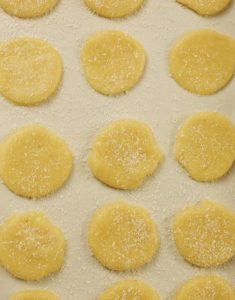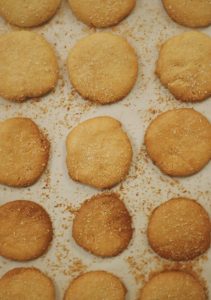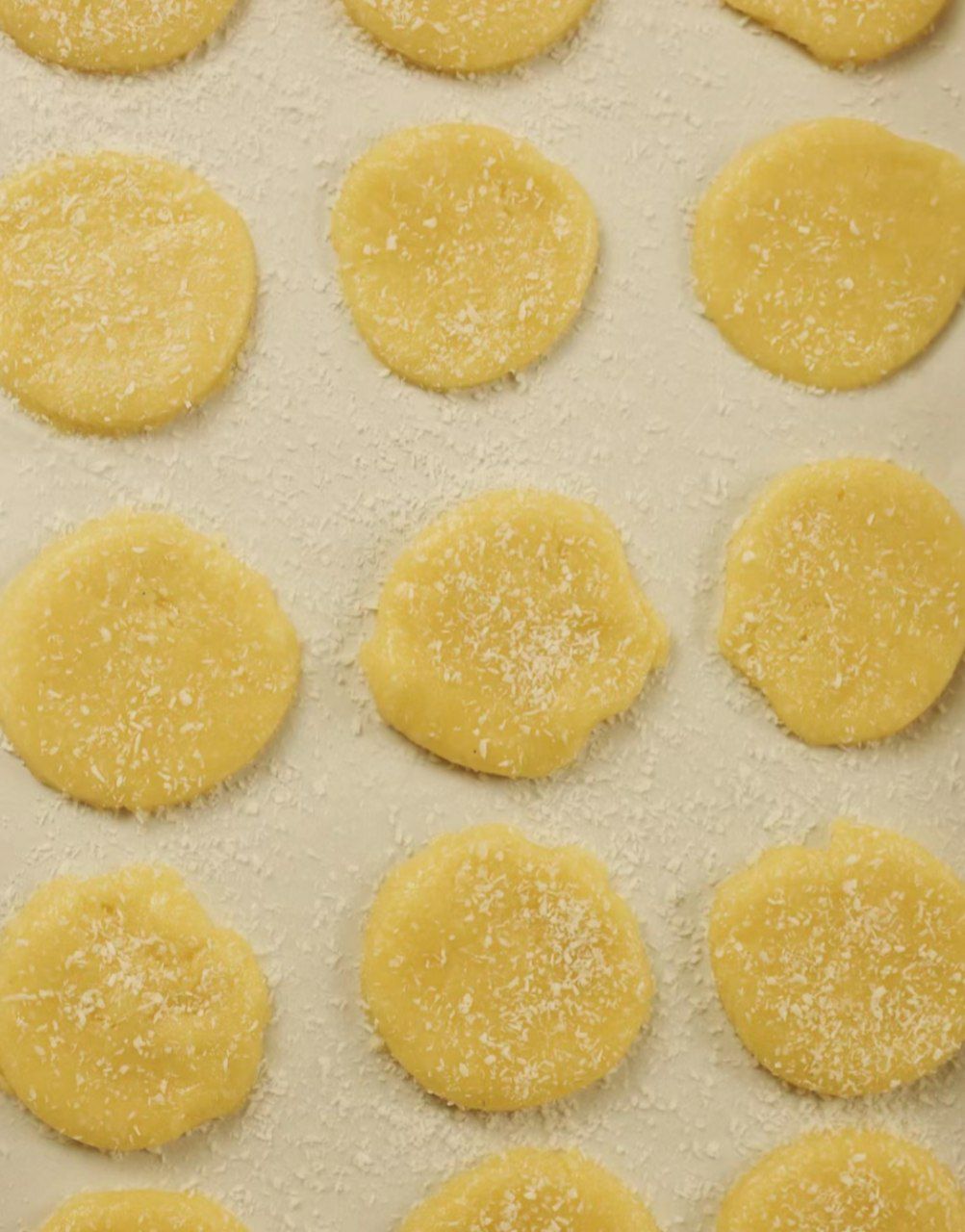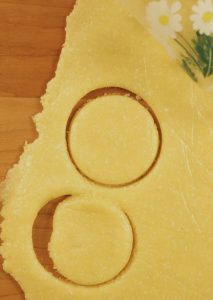The Ultimate Guide to Coconut Cookies
Coconut cookies are a delightful treat that combines the rich, tropical flavor of coconut with the satisfying texture of a well-baked cookie. Whether you prefer them chewy or crispy, coconut cookies offer a versatile base for endless variations. In this guide, we’ll explore everything you need to know to create the perfect batch of coconut cookies.


History and Origins of Coconut Cookies
Coconut has long been a favorite ingredient in desserts across various cultures. From the tropical regions where coconut palms are abundant to the kitchens of home bakers worldwide, coconut cookies have evolved into a beloved treat with countless variations. The use of coconut in baking dates back centuries, with recipes passed down through generations and adapted to suit different tastes and textures.
Modern-day coconut cookies can range from the classic chewy variety to the crisp and buttery versions found in bakeries. As baking techniques and ingredients have advanced, so too have the recipes for these delicious cookies. If you’re looking for a simple yet delicious recipe, this one from Allrecipes is a great place to start.
Ingredients and Their Importance
To create the perfect coconut cookies, it’s essential to understand the role of each ingredient:
- Coconut: The star of the show, coconut can be used in various forms such as shredded, flaked, or desiccated. Each type of coconut affects the texture and flavor of the cookie differently. For a more pronounced coconut flavor, consider using toasted coconut as suggested here.
- Flour: The choice of flour impacts the cookie’s texture. For a softer cookie, all-purpose flour is ideal, while using a blend of flours can create a denser or crispier cookie.
- Butter vs. Margarine: While both can be used, butter generally adds a richer flavor and a softer texture. Margarine, on the other hand, might make the cookies slightly crispier.
- Sugars: Using a combination of brown sugar and white sugar can enhance the cookie’s chewiness and add depth to the sweetness. Brown sugar, in particular, adds moisture and a slight molasses flavor.
- Additional Ingredients: Incorporating ingredients like caramel chips, chocolate chips, or nuts can elevate the flavor profile of coconut cookies. For a different twist, consider adding spices such as cinnamon or nutmeg.
Popular Coconut Cookie Recipes
There are several variations of coconut cookies, each with its unique flavor and texture:
- Chewy Coconut Cookies: These cookies are all about achieving the perfect balance of moisture and sweetness. The key to a chewy texture is using a good amount of brown sugar and ensuring the cookies don’t overbake.
- Crispy Coconut Cookies: If you prefer a cookie with a crisp bite, the secret lies in baking at a slightly higher temperature and using white sugar predominantly. This allows the cookies to spread more and develop a crunchy edge.
- Coconut Macaroons: These are a type of coconut cookie that is dense and often dipped in chocolate. They are incredibly easy to make and can be stored for longer periods, making them perfect for gifting.
- Toasted Coconut Cookies: Toasting the coconut before adding it to the dough enhances the flavor and adds a slight crunch. This extra step is worth it for the deep, nutty flavor it imparts.
- Vegan and Gluten-Free Coconut Cookies: With the right substitutions, such as using coconut oil instead of butter and gluten-free flour, you can create delicious coconut cookies that cater to dietary restrictions.
Step-by-Step Guide to Making Coconut Cookies
Follow these steps to ensure your coconut cookies turn out perfectly every time:
Preparation
- Gather all your ingredients and tools, including mixing bowls, a whisk, and a baking sheet lined with parchment paper.
- Preheat your oven according to the recipe’s instructions.
Mixing the Dough
- Cream the butter and sugar until light and fluffy. This step is crucial for incorporating air into the dough, which affects the cookie’s texture.
- Gradually add the dry ingredients and mix until just combined. Overmixing can lead to tough cookies.
Baking Process
- Use a cookie scoop to ensure uniform size and even baking.
- Space the cookies adequately on the baking sheet to allow for spreading.
- Bake until the edges are golden, but the centers are still slightly soft. This ensures a chewy texture.
Cooling and Storing
- Let the cookies cool on the baking sheet for a few minutes before transferring them to a wire rack.
- Store in an airtight container to maintain freshness.
Health Benefits and Nutritional Information
Coconut is not just delicious but also packed with nutrients. It is a good source of fiber and healthy fats, which can help with digestion and provide sustained energy. While coconut cookies are a treat, incorporating unsweetened coconut and healthier sugar alternatives can make them a more nutritious option.
Pairing Coconut Cookies with Beverages
Coconut cookies pair wonderfully with various beverages:
- Coffee: The rich, bitter notes of coffee complement the sweet, tropical flavor of coconut cookies.
- Tea: A light, fruity tea can enhance the coconut flavor, making it a delightful afternoon treat.
- Milk: For a classic pairing, nothing beats the combination of cookies and a glass of cold milk.
Creative Twists and Variations
Don’t be afraid to get creative with your coconut cookies:
- Add chocolate chips or white chocolate for a rich contrast to the coconut.
- Incorporate dried fruits like cranberries or raisins for a chewy, sweet-tart addition.
- Experiment with spices like cinnamon or cardamom to add warmth and depth to your cookies.
Common Mistakes to Avoid
Here are some common pitfalls to watch out for when baking coconut cookies:
- Overmixing the Dough: This can result in tough cookies.
- Incorrect Measurements: Baking is a science, so precise measurements are crucial, especially for flour.
- Baking at the Wrong Temperature: Too high, and your cookies may burn; too low, and they may not spread properly.
Frequently Asked Questions
- How do I keep coconut cookies from spreading too much? Ensure your dough is well-chilled before baking and avoid overmixing.
- Can coconut cookies be made without eggs or dairy? Yes! There are many vegan recipes available that use substitutes like flax eggs and coconut oil.
- How can I make my coconut cookies more crispy or chewy? For crispy cookies, bake longer at a lower temperature. For chewier cookies, use more brown sugar and reduce the baking time slightly.
Conclusion
Coconut cookies are a versatile and delicious treat that can be adapted to suit any taste or occasion. Whether you’re making a simple batch for a quick snack or creating an elaborate version for a special event, the possibilities are endless. With the tips and recipes provided in this guide, you’re well on your way to mastering the art of coconut cookie baking.
Suggested Internal Links:
- Link to Avocado Salsa Recipe within the section on pairing coconut cookies with beverages. For example, “Pairing coconut cookies with a refreshing drink like this avocado salsa can balance the sweetness.”
- Link to Mediterranean Couscous Salad when discussing health benefits. For example, “Adding nutritious options like a Mediterranean couscous salad alongside coconut cookies makes for a balanced meal.”



